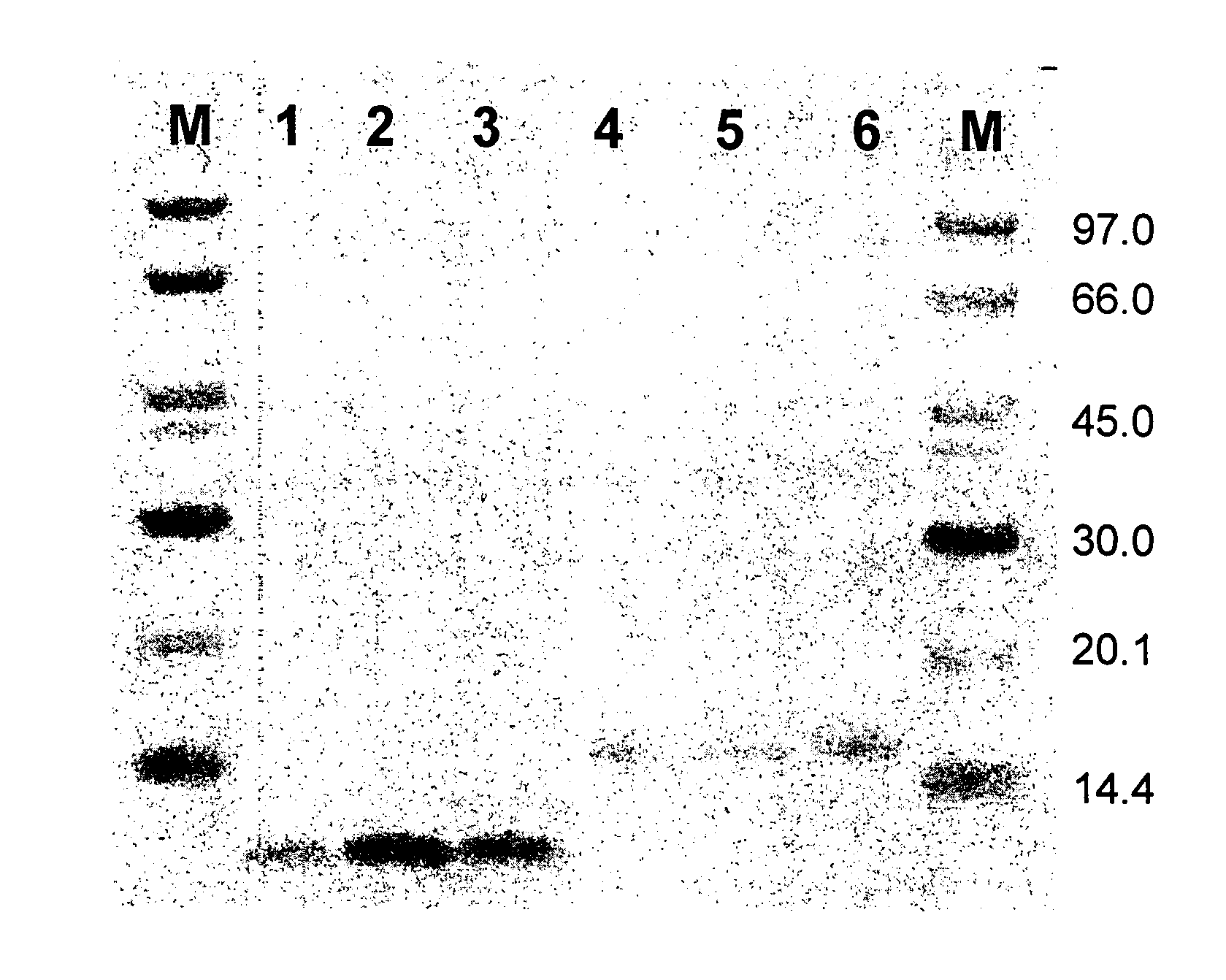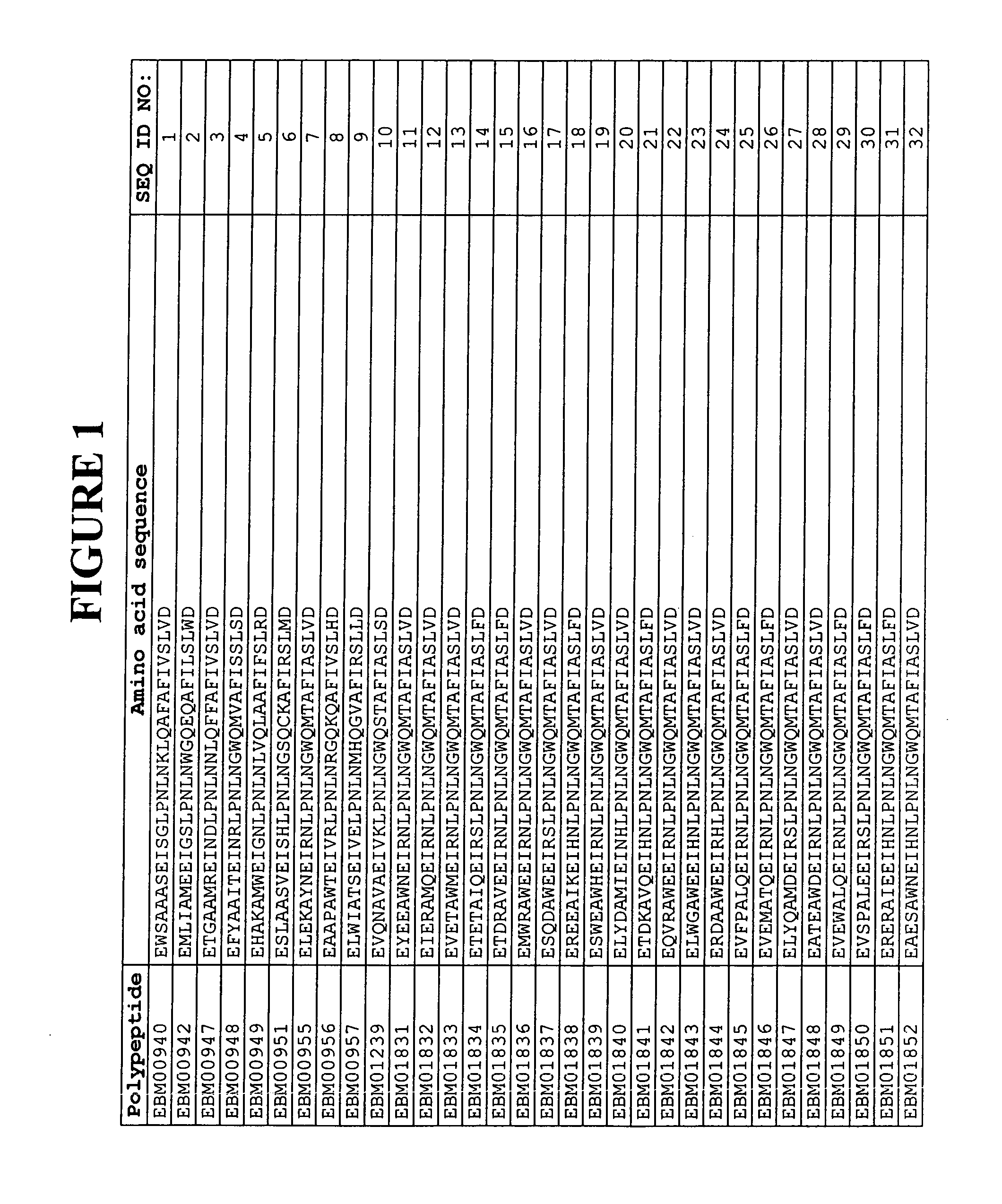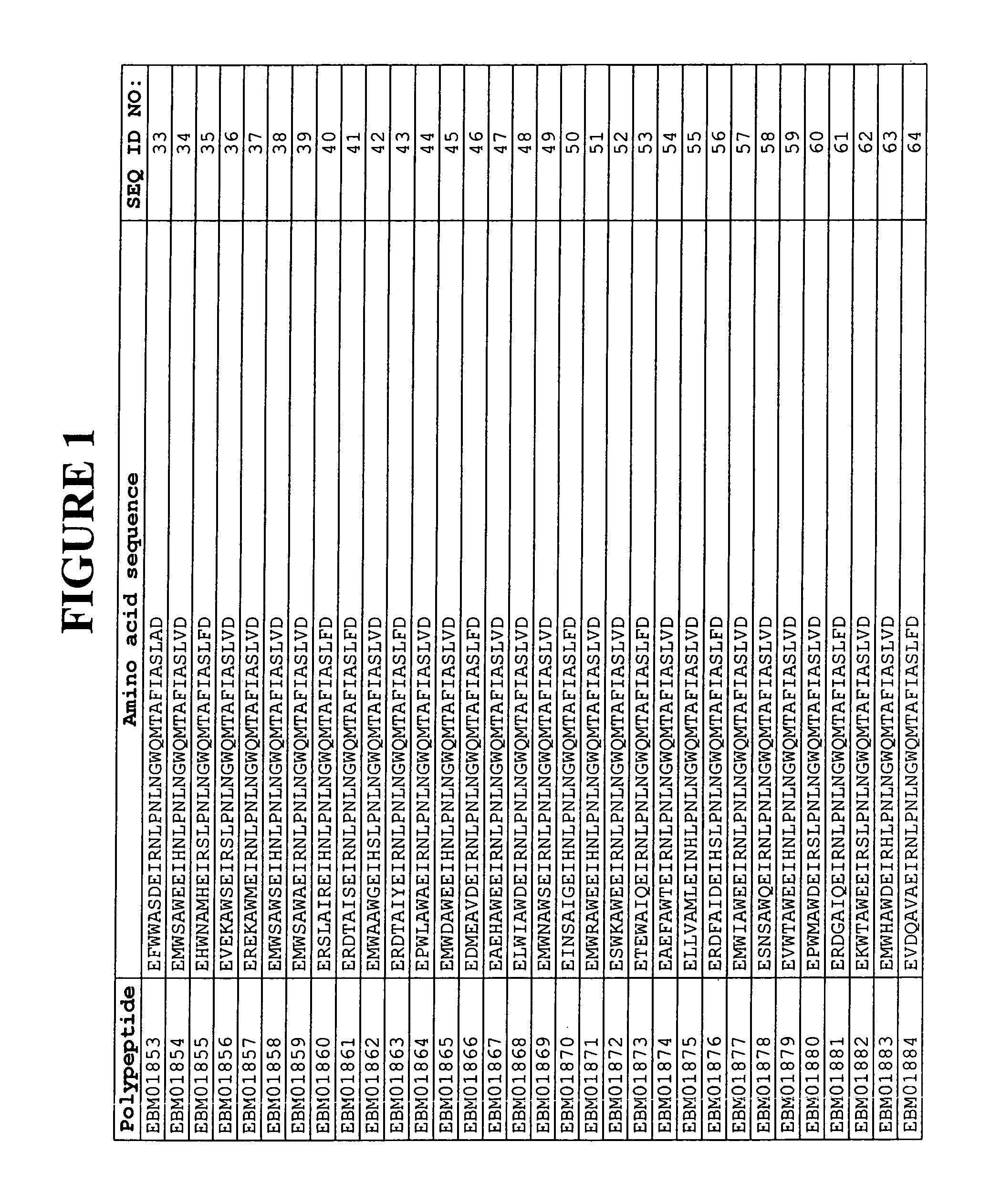Polypeptides
a polypeptide and polypeptide technology, applied in the field of polypeptides, can solve the problems of poor prognosis and high expression of these particular receptors, and achieve the effect of improving the half-life of egfr-binding polypeptides and enhancing binding properties
- Summary
- Abstract
- Description
- Claims
- Application Information
AI Technical Summary
Benefits of technology
Problems solved by technology
Method used
Image
Examples
example 1
First Selection of EGFR Binding Polypeptides According to the Invention
Materials and Methods
Production of Polypeptide Binders, Strains, Vectors, and Phagemid Library
[0273]The amber suppressor Escherichia coli strain RRIAM15 (Rüther, U. (1982) Nucleic Acids Res., 10, 5765-5772.) was used as bacterial host for phage production and cloning procedure. The phagemid vector pAffi1, and the construction of the phagemid library, Zlib2002 (3×109 members), used in this study are disclosed in Grönwall C, Jonsson A, Lindström S, Gunneriusson E, Ståhl S, Herne N: “Selection and characterization of Affibody ligands binding to Alzheimer amyloid beta peptides”, J. Biotechnol. (2006) in press, Epub 27 Sep. 2006. Phagemid inserts of selected clones were sub-cloned into the expression vector pAY442 and pAY430, containing a T7 promoter (Studier et al., (1990) Methods Enzymol., 185, 60-89), a DNA fragment encoding a hexahistidyl (His6) tag and a multiple cloning site, together with a gene conferring resi...
example 2
Second Selection of EGFR-Binding Polypeptides According to the Invention
Materials and Methods
Strains and Vectors
[0303]The amber suppressor Escherichia coli strain RRIAM15 (Ruther, U. (1982) Nucleic Acids Res. 10, 5765-72) was used for library construction, as bacterial host for phage production and for the cloning procedure. The phagemid vector pAffi1 was used for library construction and is described elsewhere (Grönwall C, Jonsson A, Lindström S, Gunneriusson E, Ståhl S, Herne N: “Selection and characterization of Affibody ligands binding to Alzheimer amyloid beta peptides”, J. Biotechnol. (2006) in press, Epub 27 Sep. 2006). Phagemid inserts of selected clones were subcloned into the expression vectors pAY442, containing a T7 promoter (Studier et al., (1990) Methods Enzymol. 185, 60-89), a DNA fragment encoding a hexahistidyl (His6) tag and a multiple cloning site, together with a gene conferring resistance to kanamycin. The E. coli strain BL21(DE3) (Novagen, Madison, Wis.) was us...
example 3
Third Selection of EGFR-Binding Polypeptides According to the Invention
[0338]Based on a statistical analysis of the selection results from Example 2, a third library of putative EGFR binding polypeptides was prepared essentially as described above. Following phage display selection using EGFR as target and ELISA screening of the selected variants, 17 additional sequences of EGFR binding Z variants were identified. Their amino acid sequences are presented in FIG. 1 and in the sequence listing as SEQ ID NO:310-326. The deduced EGFR binding motifs of these EGFR binding Z variants are presented in FIG. 1 and in the sequence listing as SEQ ID NO:147-163.
PUM
| Property | Measurement | Unit |
|---|---|---|
| molecular weight | aaaaa | aaaaa |
| molecular weight | aaaaa | aaaaa |
| width | aaaaa | aaaaa |
Abstract
Description
Claims
Application Information
 Login to View More
Login to View More - R&D
- Intellectual Property
- Life Sciences
- Materials
- Tech Scout
- Unparalleled Data Quality
- Higher Quality Content
- 60% Fewer Hallucinations
Browse by: Latest US Patents, China's latest patents, Technical Efficacy Thesaurus, Application Domain, Technology Topic, Popular Technical Reports.
© 2025 PatSnap. All rights reserved.Legal|Privacy policy|Modern Slavery Act Transparency Statement|Sitemap|About US| Contact US: help@patsnap.com



